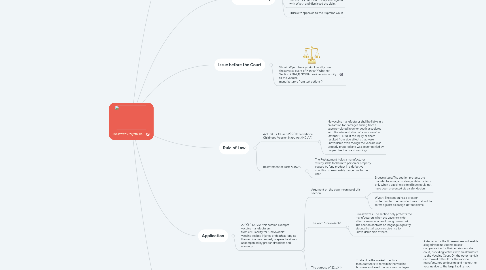
1. Facts
1.1. Paties
1.1.1. Russell BRUESEWITZ et alk., Petitioners
1.1.2. Wyeth LLC, fka Wyeth, Inc., fka Wyeth Laboratories, et al.
1.2. What happened
1.2.1. Russell and Robalee Brusewitz claimed that Hannah, their daughter, suffered seizures and developmental delay following the DTP vaccine administration. Brusewitz petitioned the vaccine court, but the court denied the award.
1.2.2. Brusewitz rejected the ruling made by the vaccine court and filed a state claim alleging that the DTP vaccine manufactured by Wyeth had a defective design that caused the side effects.
2. Procedural History
2.1. The Vaccine Court found that the side effects Hannah suffered were not listed on the Vaccine Injury Table for DTP.
2.2. The Third Circuit Court of Appeals agreed with Wyeth and dismissed the claim.
2.3. Brusewitz appealed to the Supreme Court
3. Issue before the Court
3.1. Should Wyeth have product liability over the adverse event of Hannah? Whether Section 22(b)(1) NCVIA provides a immunity to the vaccine manufacturers from tort actions ?
4. Rule of Law
4.1. 42 U.S.C. §300aa-22(b)(1) the National Childhood Vaccien Injury Act (NCVIA)
4.1.1. No vaccine manufacturer shall be liable in a civil action for damages arising from a vaccine-related injury or death associated with the administration of a vaccine after October 1, 1988, if the injury or death resulted from side effects that were unavoidable even though the vaccine was properly prepared and was accompanied by proper directions and warnings
4.2. Restatement of Torts § 402A
4.2.1. The Restatement holds a manufacturer strictly liable for harm to person or property caused by "any product in a defective condition unreasonably dangerous to the user
5. Application
5.1. 22(b)(1) NCVIA, this section exempts vaccine manufacturers from civil liability for "unavoidable" vaccine-realted injuries or death as long as the vaccine was properly prepared and was accompanied by proper directions and warnings
5.1.1. Argument on the plain meaning of this section
5.1.1.1. Bruesewitzes: The section protects the manufacturers against design-defect claims only when a vaccine's side effects could not have been prevented via a safer design.
5.1.1.2. Wyeth: The section has a broader protection for the manufacturers in absolute terms against all design-defect claims
5.1.2. The word "unavoidable"
5.1.2.1. Bruesewitzes: The section only protects the manufacturers when the vaccine's side effects are incapable of being prevented. The section contains no language explicitly stating that all vaccines give rise to unavoidable side effects.
5.1.3. The purpose of 22(b)(1)
5.1.3.1. To stabilize the market to entice manufacturers to remain in the vaccine business and avert the vaccine shortages seen in the 1980s due to the treat of tort liability
5.1.3.1.1. A decision for the Bruesewitzes will enable alleged vaccine victims to seek compensation for their injuries in state court, providing victims with an alternative to the Vaccine Court. On the other hand, it can make it difficult for the vaccine manufacturers to develop and market the vaccine due to the large liability risk.
5.1.3.1.2. A decision for Wyeth will protect vaccine manufacturers against the debilitating threat of civil litigation but would also remove a powerful incentive motivating vaccine manufacturers to develop the safest possible vaccine designs.

